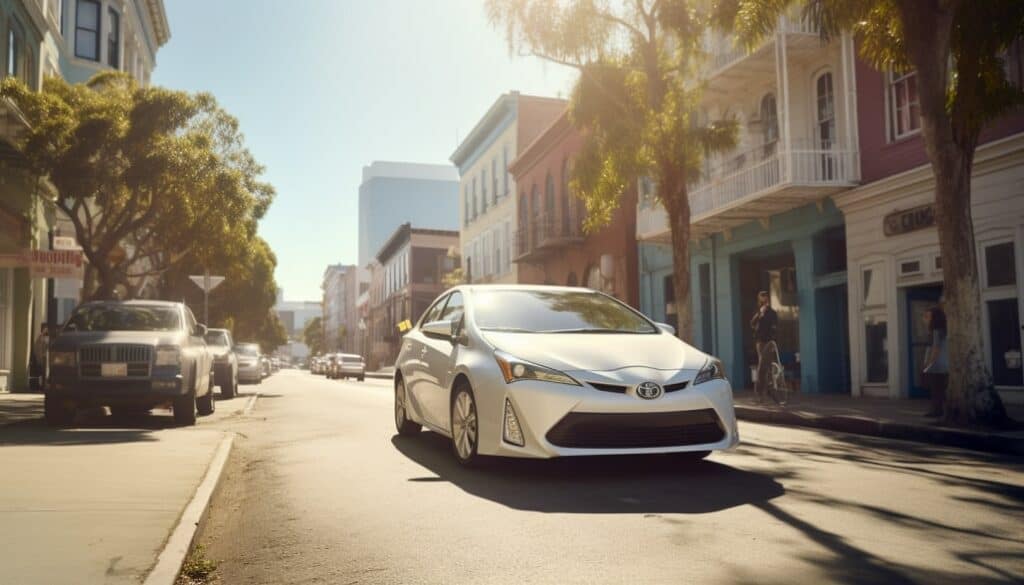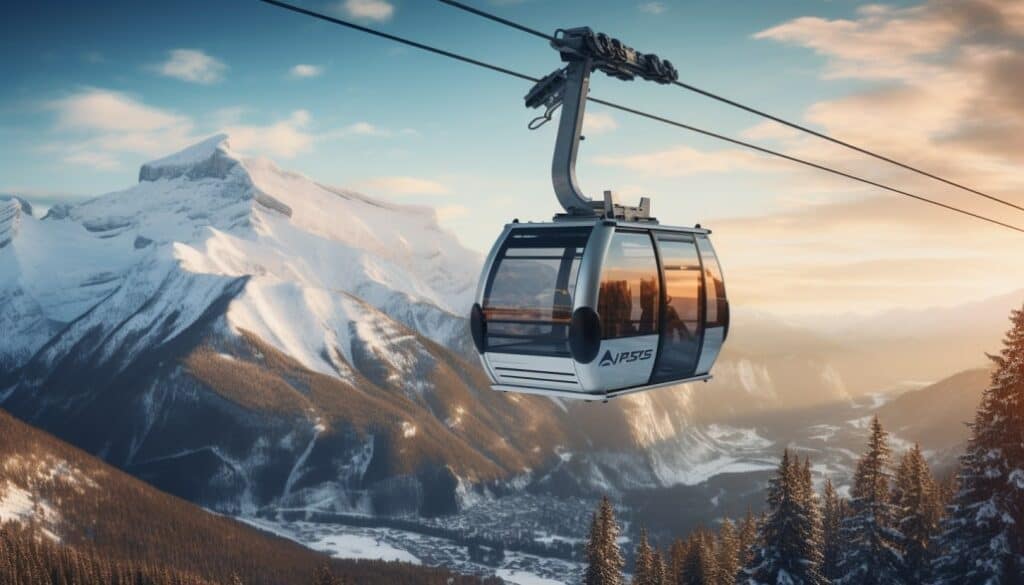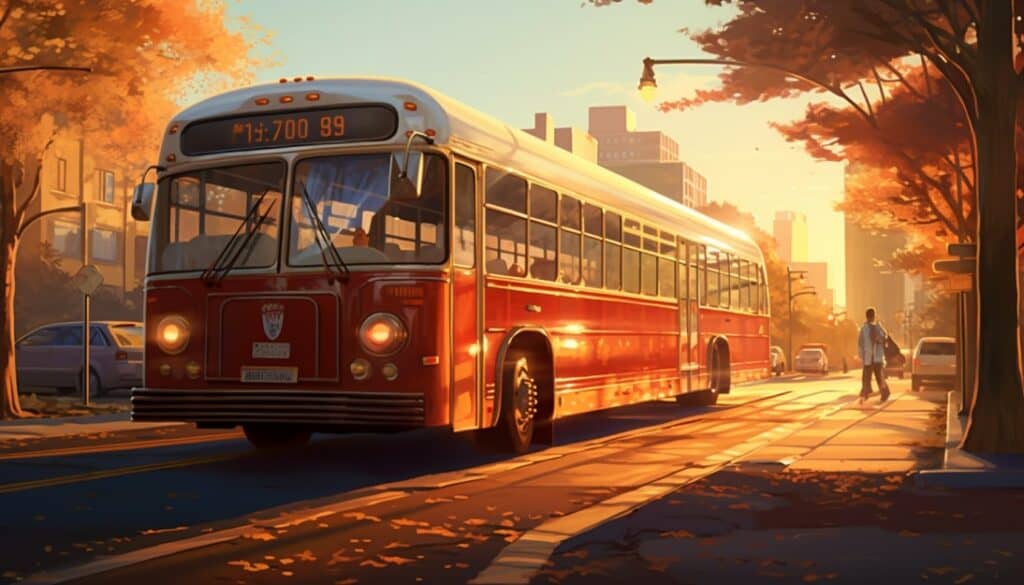Welcome to Whistler, the jewel of British Columbia! Nestled in the Coast Mountains, this Canadian paradise is a year-round destination for outdoor enthusiasts. Whether you’re here for the world-class skiing, the vibrant summer activities, or the breathtaking views, one thing is certain: you’ll need to get around. But don’t worry, we’ve got you covered. This guide will help you navigate Whistler’s transportation options, so you can spend less time planning and more time enjoying your adventure. Let’s get started!
Table of Contents
Introduction
Whistler, a resort town located in the southern Pacific Ranges of the Coast Mountains, is a haven for outdoor enthusiasts. With its world-renowned ski slopes, stunning hiking trails, and vibrant village life, it’s no wonder that it attracts over two million visitors annually. But with such a vast area to explore, getting around can be a challenge. That’s where this guide comes in.
Understanding your transportation options is key to making the most of your Whistler experience. Whether you’re a budget-conscious backpacker, a family on vacation, or a thrill-seeker looking for the quickest way to the slopes, there’s a transportation option for you. From public transit and taxis to bike rentals and gondolas, Whistler offers a variety of ways to get around.
But it’s not just about getting from point A to point B. It’s about making the journey part of the adventure. Imagine soaring over the treetops in a gondola, or cycling along a scenic trail with the wind in your hair. In Whistler, transportation isn’t just a necessity—it’s an experience.
So, whether you’re planning your first trip to Whistler or you’re a seasoned visitor, this guide will help you navigate your transportation options. We’ll cover everything from costs and convenience to schedules and accessibility. And with tips and tricks from locals, you’ll be getting around like a pro in no time.
Key takeaway: Understanding your transportation options in Whistler can enhance your experience and help you make the most of your visit.
Understanding Your Transportation Options
Whistler offers a variety of transportation options to suit every traveler’s needs. Whether you prefer the convenience of public transit, the flexibility of taxis and rideshares, the health benefits of cycling, or the thrill of gondolas and chairlifts, there’s something for everyone.
The Whistler Transit System is a reliable and cost-effective way to get around. With routes covering the village, the ski slopes, and the surrounding areas, it’s a great option for those who prefer to leave the driving to someone else. Plus, with regular schedules and affordable fares, it’s a budget-friendly choice.
Taxis and rideshares offer more flexibility. Whether you’re heading out for a night on the town or need a quick ride to the slopes, these services are available at your convenience. And with a variety of companies operating in the area, you’re sure to find a service that fits your needs.
For the more active traveler, bike rentals are a great option. With a network of bike trails covering the area, you can explore Whistler at your own pace. Plus, it’s a green and healthy way to get around.
And let’s not forget about the gondolas and chairlifts. These aren’t just for skiers and snowboarders—they’re a unique and thrilling way to see Whistler from above. Whether you’re heading up the mountain for a day of adventure or simply want to enjoy the view, these sky-high rides are a must-try.
Key takeaway: From public transit to gondolas, Whistler offers a variety of transportation options to suit every traveler’s needs and preferences.

Public Transit: The Whistler Transit System
The Whistler Transit System is a popular choice for both locals and visitors. Operated by BC Transit in partnership with the Resort Municipality of Whistler, it offers a network of routes that cover the village, the ski slopes, and the surrounding areas. Whether you’re heading to the Whistler Blackcomb ski resort, the Lost Lake Park, or the Whistler Village, there’s a bus that can get you there.
The buses run regularly throughout the day, with increased service during peak seasons. And with real-time tracking available through the NextRide system, you can easily plan your journey and minimize waiting times. Plus, the buses are equipped with bike racks, making it easy to combine cycling with public transit.
Fares are affordable, with discounts available for children, seniors, and families. You can pay with cash on the bus, or purchase tickets and passes in advance for added convenience. And if you’re planning to use the bus regularly during your stay, consider getting a day pass or a monthly pass for unlimited travel. Cash fare for adults is $2.50 & children under 12 ride for free.
Remember, public transit isn’t just a way to get around—it’s also a way to reduce your environmental impact. By choosing public transit, you’re helping to reduce traffic congestion and greenhouse gas emissions. So, not only is it good for your wallet, it’s also good for the planet.
Key takeaway: The Whistler Transit System offers a reliable, affordable, and eco-friendly way to get around. With a network of routes and regular schedules, it’s a convenient option for exploring Whistler.
Taxis and Rideshares: Getting Around on Your Schedule
If you prefer a more flexible transportation option, taxis and rideshares are a great choice. Whether you’re heading out for a night on the town, need a quick ride to the slopes, or simply prefer the convenience of door-to-door service, these services are available at your fingertips.
In Whistler, you’ll find a number of taxi companies operating around the clock. From sedans and minivans to wheelchair-accessible vehicles, they offer a range of options to suit your needs. And with knowledgeable drivers who know the area well, you can be sure of a safe and smooth journey.
The preferred rideshare in Whister is Whistle, where you can use it by downloading the app.
However, keep in mind that fares for taxis and rideshares can vary depending on the time of day, the distance traveled, and the demand for service. It’s always a good idea to check the estimated fare before you book, and consider sharing your ride with others to save money.
Key takeaway: Taxis and rideshares offer flexibility and convenience, making them a great option for getting around Whistler on your own schedule. However, be sure to check the estimated fare before you book to avoid surprises.
Bike Rentals: A Green and Healthy Option
For the active traveler, bike rentals offer a green and healthy way to get around Whistler. With a network of bike trails covering the area, you can explore the stunning landscapes at your own pace.
Whistler is known for its world-class mountain biking, but you don’t have to be a pro to enjoy cycling here. There are trails for all levels, from gentle paths along the Valley Trail to challenging routes in the Whistler Mountain Bike Park. And with bike rental shops offering a range of bikes, from comfort bikes to high-performance mountain bikes, you can find the perfect ride for your adventure.
Renting a bike is easy. Many shops are conveniently located in the Whistler Village and offer hourly, daily, and weekly rentals. Some even provide helmets, locks, and trail maps as part of the rental. And if you’re new to cycling or want to improve your skills, consider taking a guided tour or a lesson.
But cycling in Whistler isn’t just about the trails. It’s also a practical way to get around the village and the surrounding areas. Many places are within cycling distance, and there are plenty of bike racks for parking. Plus, it’s a great way to avoid traffic and parking fees.
Remember, safety is important when cycling. Always wear a helmet, follow the rules of the road, and be aware of your surroundings. And if you’re planning to cycle in the backcountry, make sure you’re prepared with the right equipment and knowledge.
Key takeaway: Bike rentals offer a green and healthy way to explore Whistler. Whether you’re hitting the trails or cycling around the village, it’s a fun and practical way to get around.
Walking: When Close is Close Enough
Sometimes, the best way to get around is on your own two feet. Whistler is a pedestrian-friendly destination, with a compact village that’s easy to explore on foot. From shops and restaurants to parks and trails, many attractions are within walking distance.
Walking in Whistler isn’t just a way to get from point A to point B—it’s an experience in itself. The Village Stroll, a pedestrian-only path that winds through the heart of the village, is lined with shops, galleries, and restaurants. It’s a great place to people-watch, window-shop, or simply enjoy the atmosphere.
And let’s not forget about the walking trails. From the scenic Valley Trail to the breathtaking Sea to Sky Trail, there are plenty of opportunities to stretch your legs and enjoy the natural beauty of the area. Whether you’re looking for a leisurely stroll or a challenging hike, there’s a trail for you.
Key takeaway: Walking is a convenient and enjoyable way to explore Whistler. Whether you’re strolling through the village or hiking a trail, it’s a great way to experience the area at your own pace.
Gondolas and Chairlifts: The Sky’s the Limit
When it comes to unique transportation options, Whistler takes it to new heights—literally. The gondolas and chairlifts aren’t just for skiers and snowboarders—they’re a thrilling way to see Whistler from above.
The Whistler Blackcomb resort operates a network of gondolas and chairlifts that take you up the mountains. The most famous is the PEAK 2 PEAK Gondola, which connects the peaks of Whistler and Blackcomb mountains. With a 4.4-kilometer span and a 436-meter elevation, it’s a ride you won’t forget.
But the gondolas and chairlifts aren’t just about the ride—they’re also about the destination. At the top, you’ll find stunning views, hiking trails, mountain-top dining, and more. It’s a great way to spend a day, whether you’re an outdoor enthusiast or just want to enjoy the view.
Remember, the gondolas and chairlifts operate on a seasonal schedule, with different hours and rates for summer and winter. Be sure to check the schedule and rates before you go.
Key takeaway: Gondolas and chairlifts offer a unique and thrilling way to see Whistler. Whether you’re heading up the mountain for a day of adventure or simply want to enjoy the view, it’s a must-try experience.

Comparing Costs: Finding the Most Cost-Effective Options
When planning your trip to Whistler, it’s important to consider the cost of transportation. With a variety of options available, from public transit and taxis to bike rentals and gondolas, the costs can vary significantly. But don’t worry, we’re here to help you find the most cost-effective options for your needs.
First, let’s look at public transit. The Whistler Transit System offers affordable fares, with discounts available for children, seniors, and families. If you’re planning to use the bus regularly during your stay, consider getting a day pass or a monthly pass for unlimited travel. This can be a cost-effective option, especially if you’re staying in Whistler for an extended period.
Public Transit Fares in Whistler 2023
| TYPE | FARE | NOTES |
| ADULT (ALL ADULT FARES INCLUDE FAMILY TRAVEL PROGRAM) | ||
| CASH FARE | $2.50 | Drivers do not carry change. |
| 10 TICKETS | $22.50 | |
| DAYPASS | $7.00 | |
| MONTHLY PASS* | $50.00 | |
| 6-MONTH PASS* | $270.00 | Available at RMOW Municipal Hall (4325 Blackcomb Way) |
| 12-MONTH PASS* | $510.00 | Available at RMOW Municipal Hall (4325 Blackcomb Way) |
| SENIOR (65+) | ||
| CASH FARE | $2.50 | Seniors aged 65+, with valid ID |
| 10 TICKETS | $18.00 | |
| DAYPASS | $7.00 | |
| MONTHLY PASS* | $40.00 | |
| 6-MONTH PASS* | $215.00 | Available at RMOW Municipal Hall (4325 Blackcomb Way) |
| 12-MONTH PASS* | $410.00 | Available at RMOW Municipal Hall (4325 Blackcomb Way) |
| STUDENT | ||
| CASH FARE | $2.50 | Drivers do not carry change |
| 10 TICKETS | $18.00 | |
| DAY PASS | $7.00 | |
| MONTHLY PASS* | $40.00 | |
| 6-MONTH PASS* | $215.00 | Available at RMOW Municipal Hall (4325 Blackcomb Way) |
| 12-MONTH PASS* | $410.00 | Available at RMOW Municipal Hall (4325 Blackcomb Way) |
| CHILD (6 TO 12) | ||
| Free | More information | |
| CHILD (5 AND UNDER) | ||
| Free when accompanied by an attendant 12 years or older | More information |
Taxis and rideshares offer more flexibility, but the costs can add up quickly, especially during peak times. Be sure to check the estimated fare before you book, and consider sharing your ride with others to save money. If you’re traveling in a group, this can be a cost-effective option.
Bike rentals can be a great option if you’re planning to explore the local trails or get around the village. The cost of renting a bike can vary depending on the type of bike and the duration of the rental, but it’s generally a cost-effective option for short distances.
Finally, gondolas and chairlifts offer a unique and thrilling way to get around, but they can be more expensive than other options. However, if you’re planning to ski or snowboard, the cost of a lift ticket can be worth the convenience and the experience.
Remember, the most cost-effective option for you will depend on your needs and preferences. Consider your itinerary, your budget, and your comfort level with different modes of transportation. And don’t forget to factor in the cost of transportation when planning your trip.
Key takeaway: By comparing costs and considering your needs and preferences, you can find the most cost-effective transportation options for your trip to Whistler.
Maximizing Convenience: Tips and Tricks
When it comes to transportation in Whistler, convenience is key. Whether you’re trying to catch the first chairlift of the day, make a dinner reservation, or simply explore the area, getting around efficiently can make your trip more enjoyable. Here are some tips and tricks to help you maximize convenience.
First, understand the schedules and routes of the Whistler Transit System. The buses run regularly throughout the day, with increased service during peak seasons. Use the NextRide system to track buses in real time and plan your journey. If you’re using taxis or rideshares, book in advance during peak times to avoid long waits.
Second, consider the best times to travel. During peak seasons, the roads can be busy and parking can be limited. Try to avoid traveling during peak times, and consider using public transit or cycling to avoid traffic and parking fees.
Finally, consider accessibility. If you have special transportation needs, be sure to check the accessibility of different transportation options. The Whistler Transit System offers accessible services, and many taxi companies have wheelchair-accessible vehicles. If you’re planning to cycle, check the terrain and difficulty of the bike trails to ensure they’re suitable for your abilities.
Remember, maximizing convenience isn’t just about saving time—it’s also about making your trip more enjoyable. By planning ahead and choosing the right transportation options, you can spend less time getting around and more time enjoying all that Whistler has to offer.
Key takeaway: By understanding schedules and routes, considering the best times to travel, and checking accessibility, you can maximize convenience and make your trip to Whistler more enjoyable.
Understanding Schedules and Routes
One of the keys to getting around Whistler efficiently is understanding the schedules and routes of the local transportation options. The Whistler Transit System offers a network of routes that cover the village, the ski slopes, and the surrounding areas. The buses run regularly throughout the day, with increased service during peak seasons. You can use the NextRide system to track buses in real time and plan your journey.
If you’re using taxis or rideshares, keep in mind that the availability can vary depending on the time of day and the demand for service. During peak times, you may have to wait longer for a ride. To avoid long waits, consider booking your ride in advance.
If you’re planning to cycle, be sure to check the bike trail map. Whistler offers a network of bike trails that cover the area, but the terrain and difficulty can vary. Choose a route that’s suitable for your abilities, and remember to check the opening and closing times of the trails.
Key takeaway: Understanding the schedules and routes of the local transportation options can help you get around Whistler efficiently and make the most of your time.

Best Times to Travel
When planning your transportation in Whistler, it’s important to consider the best times to travel. During peak seasons, the roads can be busy and parking can be limited. To avoid traffic and parking hassles, try to travel during off-peak times.
If you’re using public transit, keep in mind that the buses can be crowded during peak times. To avoid the crowds, consider traveling early in the morning or late in the evening. If you’re using taxis or rideshares, be aware that the demand for service can be high during peak times, which can result in longer waits and higher fares.
If you’re planning to cycle, consider the weather and the time of day. The bike trails can be busy during the summer months, especially on weekends. To avoid the crowds, consider cycling early in the morning or late in the afternoon. And remember to check the weather forecast before you go, as the conditions can affect the safety and enjoyment of your ride.
Key takeaway: By considering the best times to travel, you can avoid traffic, save money, and make your trip to Whistler more enjoyable.
Accessibility Considerations
Accessibility is an important factor to consider when choosing your transportation options in Whistler. If you have special transportation needs, be sure to check the accessibility of different options.
The Whistler Transit System offers accessible services, with low-floor buses and priority seating for people with disabilities. If you’re using taxis, many companies have wheelchair-accessible vehicles. However, it’s a good idea to book in advance to ensure availability.
If you’re planning to cycle, check the terrain and difficulty of the bike trails. Some trails are suitable for adaptive mountain bikes, but others may be challenging for people with mobility issues. And if you’re planning to use the gondolas and chairlifts, check the accessibility features and policies of the Whistler Blackcomb resort.
Remember, accessibility isn’t just about physical access—it’s also about information access. Be sure to check the websites of transportation providers for accessibility information, and don’t hesitate to contact them if you have any questions.
Key takeaway: By considering accessibility, you can choose the transportation options that best meet your needs and ensure a smooth and enjoyable trip to Whistler.
Your Whistler Journey Awaits
The adventure of a lifetime awaits you in Whistler. From the moment you arrive, you’ll be captivated by the stunning landscapes, the vibrant village life, and the endless opportunities for outdoor activities. But before you can start exploring, you’ll need to figure out how to get around. That’s where this guide comes in.
Whether you’re a first-time visitor or a seasoned traveler, preparing for your trip can make all the difference. From understanding your transportation options to planning your itinerary, there’s a lot to consider. But don’t worry, we’re here to help.
In this guide, we’ll provide you with all the information you need to navigate Whistler’s transportation options. We’ll cover everything from costs and convenience to schedules and accessibility. And with tips and tricks from locals, you’ll be getting around like a pro in no time.
Key takeaway: Preparing for your trip can enhance your Whistler experience. By understanding your transportation options and planning ahead, you can make the most of your visit.
Preparing for Your Trip
When it comes to planning your trip to Whistler, preparation is key. From choosing your transportation options to planning your itinerary, there’s a lot to consider. But don’t worry, we’re here to help.
First, consider your transportation options. Whether you prefer the convenience of public transit, the flexibility of taxis and rideshares, the health benefits of cycling, or the thrill of gondolas and chairlifts, there’s a transportation option for you. Understanding your options and their costs can help you budget for your trip and make the most of your time in Whistler.
Next, plan your itinerary. Whistler offers a wealth of activities and attractions, from skiing and snowboarding to hiking and mountain biking. But with so much to see and do, it can be overwhelming. Start by identifying your top priorities, then plan your transportation accordingly. Remember, some activities and attractions may require advance booking or have specific transportation requirements.
Finally, consider any special needs or considerations. If you have accessibility needs, check the accessibility of different transportation options. If you’re traveling with children or pets, consider their needs as well. By planning ahead, you can ensure a smooth and enjoyable trip for everyone.
Key takeaway: By considering your transportation options, planning your itinerary, and addressing any special needs or considerations, you can prepare for a successful trip to Whistler.
Embracing the Adventure
Once you’ve prepared for your trip, it’s time to embrace the adventure. Whistler is a place of endless possibilities, where every journey can be an adventure in itself. Whether you’re soaring over the treetops in a gondola, cycling along a scenic trail, or simply strolling through the village, there’s always something to discover.
Remember, the journey is just as important as the destination. Don’t rush from one attraction to the next—take the time to enjoy the journey. Whether it’s the stunning views from a gondola ride, the thrill of a downhill bike ride, or the simple pleasure of a leisurely walk, make the most of every moment.
And don’t be afraid to venture off the beaten path. Whistler is full of hidden gems, from secluded trails to local favorites. Ask locals for recommendations, explore different areas, and be open to new experiences. You never know what you might discover.
Finally, remember to respect the environment. Whistler is a place of natural beauty, and it’s up to all of us to preserve it for future generations. Follow the principles of Leave No Trace, respect wildlife, and be a responsible traveler.
Key takeaway: Embrace the adventure of your Whistler journey. Enjoy the journey, venture off the beaten path, and respect the environment. Your Whistler adventure awaits!
Frequently Asked Questions
What is the most cost-effective way to get around Whistler?
The most cost-effective way to get around Whistler largely depends on your personal needs and the nature of your trip. If you’re planning to stay within the village and nearby attractions, walking or cycling can be the most cost-effective options. For longer distances or for those who prefer not to walk or cycle, the Whistler Transit System offers affordable fares and passes for unlimited travel. Taxis and rideshares can be more convenient, but the costs can add up quickly, especially during peak times.
How accessible are the different transportation options?
Whistler strives to be accessible to all visitors. The Whistler Transit System offers low-floor buses and priority seating for people with disabilities. Many taxi companies have wheelchair-accessible vehicles, but it’s recommended to book in advance to ensure availability. For those planning to cycle, it’s important to check the terrain and difficulty of the bike trails to ensure they’re suitable for your abilities. The gondolas and chairlifts at Whistler Blackcomb also have accessibility features and policies.
Can I use public transportation to reach major attractions?
Yes, the Whistler Transit System provides service to many major attractions, including Whistler Village, the ski slopes, and the surrounding areas. The bus routes and schedules are designed to help visitors and locals get around efficiently. However, it’s always a good idea to check the latest schedules and routes to plan your journey.
Are bike rentals available year-round?
Bike rentals are typically available during the warmer months when the trails are free of snow. This usually includes the late spring, summer, and early fall. However, the availability of bike rentals can depend on the weather conditions and the specific rental shop. It’s recommended to check with the rental shop in advance to ensure availability.
What should I do if I have special transportation needs?
If you have special transportation needs, it’s important to plan ahead. Check the accessibility of different transportation options and contact the service providers if you have any questions. If you’re using public transit, the Whistler Transit System offers accessible services. If you’re using taxis, many companies have wheelchair-accessible vehicles. If you’re planning to cycle or use the gondolas and chairlifts, check the accessibility features and policies. Remember, it’s always better to plan ahead to ensure a smooth and enjoyable trip.
Sources
- “BC Transit – Welcome to Whistler.” Bctransit.com, 2023, www.bctransit.com/whistler/home. Accessed 6 July 2023.
- “BC Transit – Fares – Whistler.” Bctransit.com, 2017, www.bctransit.com/whistler/fares. Accessed 6 July 2023.
- Whistler, in. “Rideshare and Taxi – Whistler | Whistle.” Rideshare and Taxi – Whistler | Whistle, 2014, www.whistle.ca/app. Accessed 6 July 2023.
- “Whistler Bike Rentals | Whistler Blackcomb.” Whistlerblackcomb.com, 2023, www.whistlerblackcomb.com/explore-the-resort/activities-and-events/whistler-mountain-bike-park/plan-your-ride/rental-equipment.aspx. Accessed 6 July 2023.
- “PEAK 2 PEAK 360 Sightsee Experience – PEAK 2 PEAK | Whistler Blackcomb.” Whistlerblackcomb.com, 2023, www.whistlerblackcomb.com/explore-the-resort/activities-and-events/summer-activities/peak-2-peak-360-experience/peak-2-peak-gondola.aspx. Accessed 6 July 2023.
- “Bike Rental? – Whistler Forum – Tripadvisor.” Tripadvisor.ca, 2014, www.tripadvisor.ca/ShowTopic-g154948-i400-k7520923-Bike_Rental-Whistler_British_Columbia.html. Accessed 6 July 2023.




